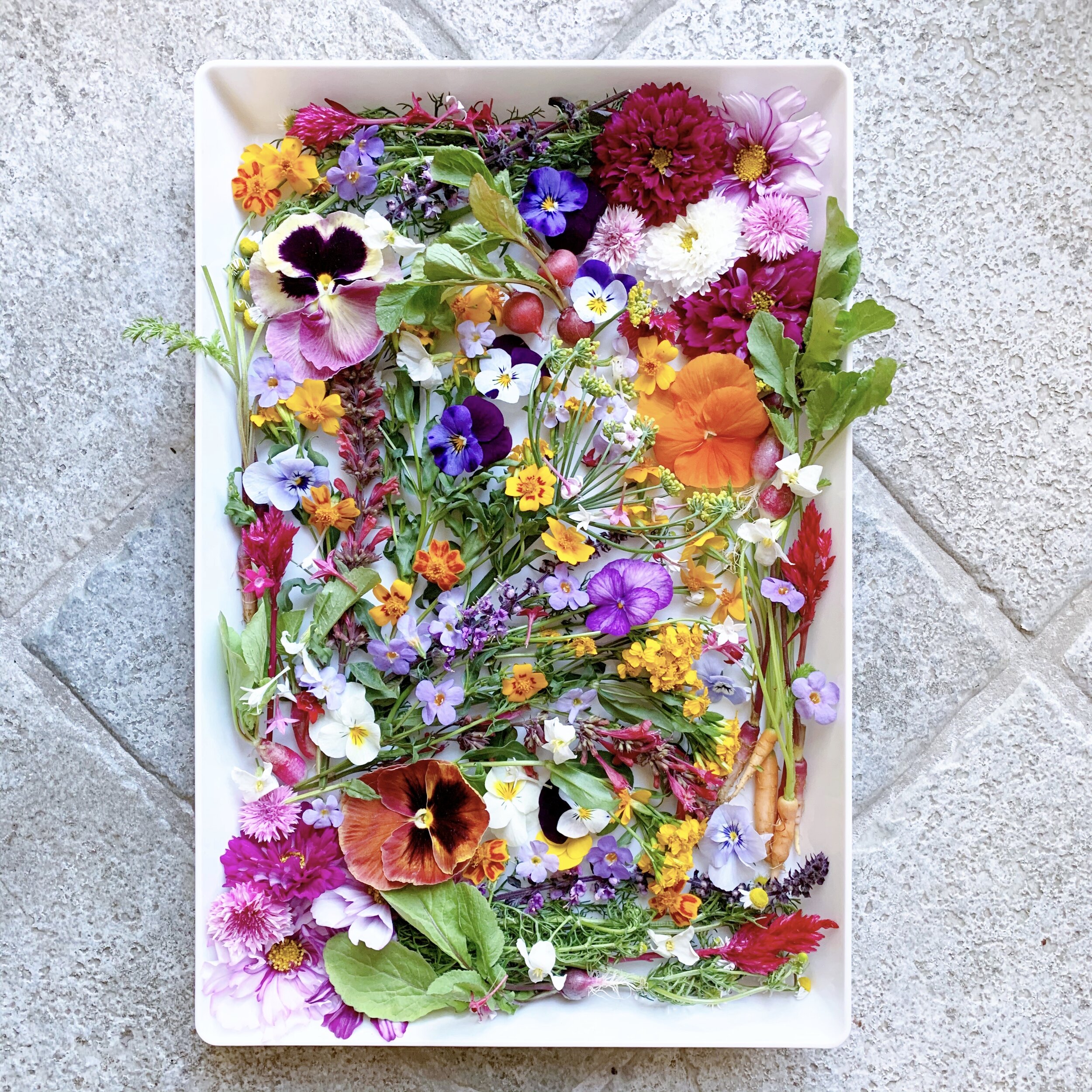Edible flowers add color, flavor, and beauty to your dishes. Creating edible flowers is a simple and enjoyable process that can elevate your culinary creations to a whole new level. Whether you’re a home cook or a professional chef, incorporating edible flowers into your recipes can surprise and delight your guests. In this guide, we’ll explore the steps to create edible flowers that are not only visually stunning but also safe and delicious to eat.
Choosing the Right Flowers
Not all flowers are edible, and it’s important to choose the right ones to ensure both safety and taste. When selecting flowers for consumption, opt for organically grown varieties to minimize the risk of chemical contamination. Some popular edible flowers include:
- Roses
- Lavender
- Nasturtiums
- Violets
- Marigolds
- Borage
Before using any flowers, do thorough research to confirm their edibility. Certain flowers, such as daffodils and foxglove, can be toxic if consumed and should be avoided.
:strip_icc()/arranging-cala-lilly-with-floral-arrangement-889361ea-35648aff84214c6192cb3a5692a5a2ee.jpg)
Credit: www.bhg.com
Preparation and Cleaning
Once you’ve selected your edible flowers, it’s crucial to clean them thoroughly. Gently rinse the flowers under cold water to remove any dirt, insects, or pollen. It’s advisable to place the flowers on a paper towel and pat them dry to ensure they are clean and free of moisture.

Credit: abeautifulmess.com
Creating Edible Flower Petals
Edible flower petals can be a stunning addition to salads, desserts, and cocktails. To create edible flower petals, carefully remove the petals from the blooms and discard the stems and sepals. It’s essential to handle the petals gently to prevent damage and maintain their visual appeal.
Infusing Floral Flavors
Infusing floral flavors into various culinary elements can impart a delightful fragrance and taste to your dishes. One simple way to infuse floral flavors is by making floral syrups. To create a floral syrup, combine water, sugar, and the edible flowers of your choice in a saucepan, simmer the mixture until the sugar dissolves, then strain the liquid to remove the flower solids. This floral syrup can be used to sweeten beverages, drizzle over desserts, or flavor icings and glazes.
Decorative Ice Cubes
Enhance the visual appeal of your beverages and cocktails by incorporating edible flowers into decorative ice cubes. Simply place edible flower petals or small blooms into ice cube trays, fill them with water, and freeze until solid. These floral-infused ice cubes can elevate the presentation of your drinks and impress your guests.
Edible Flower Crystallization
Creating crystallized edible flowers is an elegant way to decorate cakes, pastries, and desserts. To crystallize edible flowers, gently brush the petals with egg whites, then sprinkle them with superfine sugar. Allow the flowers to dry on a wire rack until the sugar solidifies, resulting in beautifully adorned edible blooms that add a touch of sophistication to your confections.
Salads and Garnishes
Edible flower petals can be used to add visual appeal and a subtle flavor to salads and other dishes. Toss a handful of petals into green salads or use them as an attractive garnish on appetizers and entrées. Carefully incorporating edible flowers can transform ordinary dishes into eye-catching and delectable creations.
Edible Flower Safety
While creating and using edible flowers can be an enjoyable culinary experience, it’s crucial to practice caution and ensure safety. Always confirm the identity and edibility of flowers before using them in your recipes. If you have any doubts about a specific flower, err on the side of caution and refrain from consuming it.
Lastly, if you have any known allergies, particularly to pollen or specific flower types, consult with a healthcare professional before integrating new edible flowers into your diet to prevent potential allergic reactions.
The Final Flourish
Now that you’re equipped with the knowledge of creating edible flowers, it’s time to unleash your creativity in the kitchen. Experiment with different types of edible flowers and explore innovative ways to incorporate them into your culinary creations. Whether you’re hosting a dinner party or simply preparing a meal for yourself, the addition of edible flowers is sure to impress and delight those who have the pleasure of enjoying your delectable dishes.
Frequently Asked Questions For How To Create Edible Flowers: A Step-by-step Guide To Grow And Enjoy Beautiful Blooms
How Do I Create Edible Flowers At Home?
Creating edible flowers at home is easy! Choose organic flowers free from pesticides, wash them gently, and use them in your favorite dishes or as garnishes.
Which Flowers Are Safe To Eat?
There are several flowers that are safe to eat, such as roses, pansies, marigolds, and violets. Make sure to research each flower before consuming it.
How Can I Use Edible Flowers In My Recipes?
Edible flowers can be used in various ways. Add them to salads, desserts, or drinks for a colorful and unique touch. They also make great garnishes for cakes and cocktails.
Are There Any Precautions I Need To Take Before Eating Edible Flowers?
Yes, it’s important to ensure that the flowers are edible and have not been treated with chemicals. Also, be aware of any potential allergies or reactions you may have to specific flowers.
